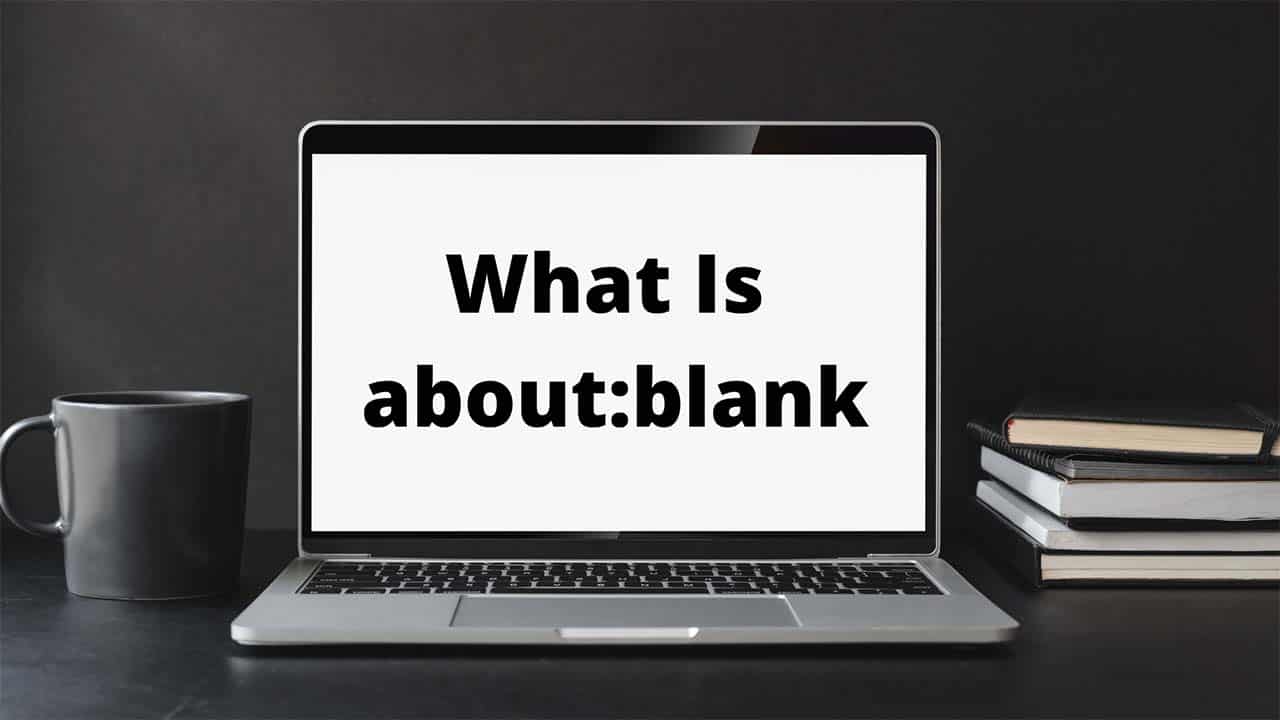Whether you’re using Firefox, Chrome, Edge, Safari, or any other sort of browser, the phrase about: blank (also known as About Blank) refers to nothing more than an empty page on the tab of your browser window. The page shows with the label about:blank in both the URL bar and the tab’s page title, indicating that the page is not yet available. When you click on a link or open a link in a new tab or window, you’ve surely noticed that an empty page appears every now and then.
Quick Access
What is the situation with regard to blank Mean?
About:blank pages are a component of the about:URL scheme, which is used by browsers to handle internal instructions and to display information. About: about, about:cache, and about:plugins are just a few of the “about” commands that are supported by most modern browsers.
In the case of an about:blank tab or window, there is no website to load, and it is not meant to load one. These windows, on the other hand, are more than simply blank pages; they are blank pages that include hidden functionalities that the browser may access. The key takeaway is that about: blank is exactly what it sounds like: a blank page that is not a URL; it is a browser command that may be executed when the browser is launched.
What is the purpose of the about:blank variable?
- The Most Popular Consumer Justifications for Using blank Pages
- You may be perplexed as to why individuals would want to utilise a blank page.
There are a variety of reasons why people like the concept of opening their browser to a blank page, including:
- Keeping the browser from opening a large number of tabs or windows from the previous session is important.
- Ensure that you have privacy when you launch your product.
- By starting their session on a non-internet browser tab, they are able to control their bandwidth use.
- Making the homepage completely blank
- Keeping programmes under control on an older computer
- Keep distractions to a minimum.
Although the concept seems bizarre, it serves a functional purpose, as seen above. Using about:blank is the most popular way for consumers to command their web browser to open a blank page when it is first started or even every time a new tab or window is opened. About:blank ensures that the starting process is quick and free of distractions, which is particularly important in today’s world when programs are meant to entice you in or keep you attached to them in order to reap financial rewards. You may be familiar with this since it appears on Facebook, Twitter, the start pages of Edge and Firefox, and even the Yahoo home page, to mention a few examples.
The most common reasons why browsers use about:blank pages are as follows:
The most typical reason for a blank page to be shown in a browser is to process data behind the scenes. When you open an executable file from a browser, such as Chrome or Firefox, it is quite tempting for them to take control. They begin to engage in a variety of activities that use bandwidth and resources.
When you click on a download link that opens in a new window or tab, your browser is required to show a blank page in order to begin the download. If you input a web URL incorrectly, you may see the incorrect website, which may include viruses or malware, or you may receive a blank page if the browser is unable to determine what to show.
Based on the information that has been analysed, the browser is at a loss on what to do. Because the browser is unable to interpret any information due to discrepancies in HTML, Java, and other codes, the browser may open a blank page.
If you think that your device has been infected with malicious software, viruses, malware, or other harmful software, you should immediately stop using it for personal purposes and run virus scans or do a factory reset. In order to be secure in the digital age, one must keep up with the latest developments.
How to Get Rid of Those Inconvenient Blank Popups
The effectiveness of blocking about:blank pages is dependent on the reason they are shown in the first place. If you’ve made changes to your browser settings that cause it to open blank sites, you’ll need to go back into the browser settings and reverse those modifications.
If you are seeing blank pages on a frequent basis, you should first try to block malware or viruses from infecting your computer, and then uninstall and reinstall Chrome, Firefox, Safari, or whichever browser you are using. It is possible that removing malware from your computer can result in the loss of files and browser settings that were not fixed or replaced when the infection was removed.
Aside from the two cases described above, you should definitely refrain from using the about:blank feature. The usage of blank pages by several antivirus and anti-malware applications has been shown to prevent harmful URLs from running code or fooling you into taking action.
Instructions on how to correct an about:blank home page
If, as previously said, you changed your home page to a blank one, you may change it back by going to settings and changing the default homepage. Most browsers include previously used or pre-included features that may make things simpler for you while you are browsing the web. If you have removed and reinstalled your browser, enter a new URL in the appropriate box or part of the browser.
If the blank page issue continues, consider deactivating any browser extensions you may be using, closing, and re-opening your browser. Add-ons (including pop-up blockers) may be causing issues, and removing them may resolve the situation. Finally, you have the option of restoring your settings to their defaults. This is an extreme measure, but if nothing else works, you should consider trying it.
Seeing about:blank blocked page shown on your browser is not always indicative of an infected device; instead, it may indicate that you haven’t selected a homepage or that your browser is having trouble displaying information. However, if this occurs when you attempt to visit particular websites or when you first boot up your computer, it may indicate the presence of a possible issue.

